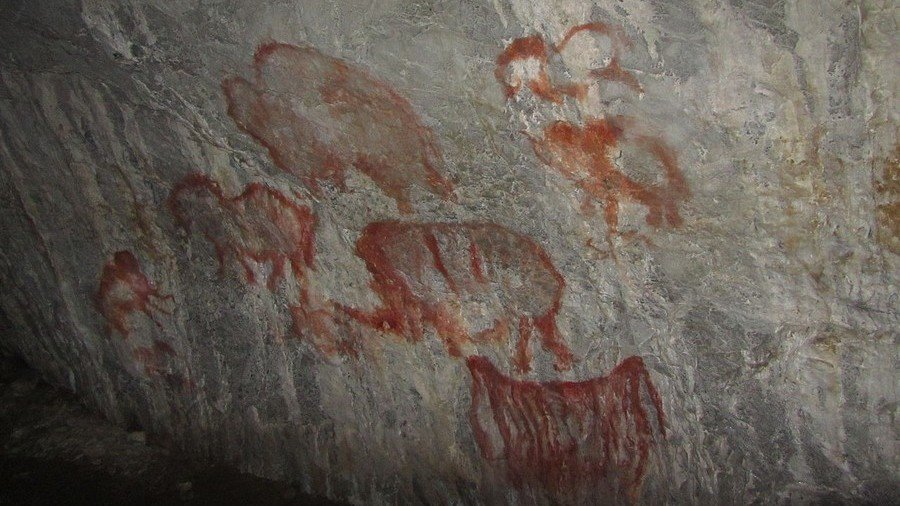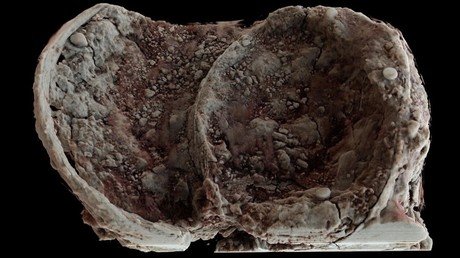Prehistoric Russian camel painting could be 38,000 years old

A prehistoric cave painting depicting a striking two-humped camel has been uncovered in a Russian cavern famous for its ancient murals. The discovery raises questions about the migration patterns of prehistoric humans.
The image, said to date back between 14,500 to 37,700 years, was found in the Kapova Cave, part of the Southern Urals mountain range, by renowned restoration scientist Eudald Guillamet. Located in Russia’s Bashkir Ural territory, the limestone grotto is almost a natural museum to Paleolithic art with more than 150 examples of ancient depictions.
Perhaps the most famous of the etchings in red ochre are of wooly mammoths, horses and rhinoceroses. But the exotic Bactrian-like camel could now become the cave’s pièce de résistance, according to Vladislav Zhitenev, archaeologist at Moscow State University.
“It becomes an important image of the Upper Paleolithic bestiary of the South Urals,”Zhitenev said.
“The age of the drawings on this panel cannot yet be accurately established, but the results of the uranium-thorium analysis of calcite deposits on which the pattern is made show unambiguously the drawing was made no earlier than 37,700 years ago.”
He indicated the camel image is unlike any of the paintings found in ancient caves in Europe, although it does bear similarities to a daubing previously discovered in Russia’s Ignatievka Cave.
It’s conceivable the unknown Kapova Cave artist could have encountered the pack animal, since two-humped camels are believed to have evolved approximately 11 million years ago from two species that lived during the Eocene period.
However, the painting raises startling questions over migration patterns of the time, since a vast journey would have to be undertaken for a person to witness the animal or for one to turn up in the region.
Archaeologists from Moscow State University will continue analyzing the artwork next month to figure out if it holds any more clues to the past.













